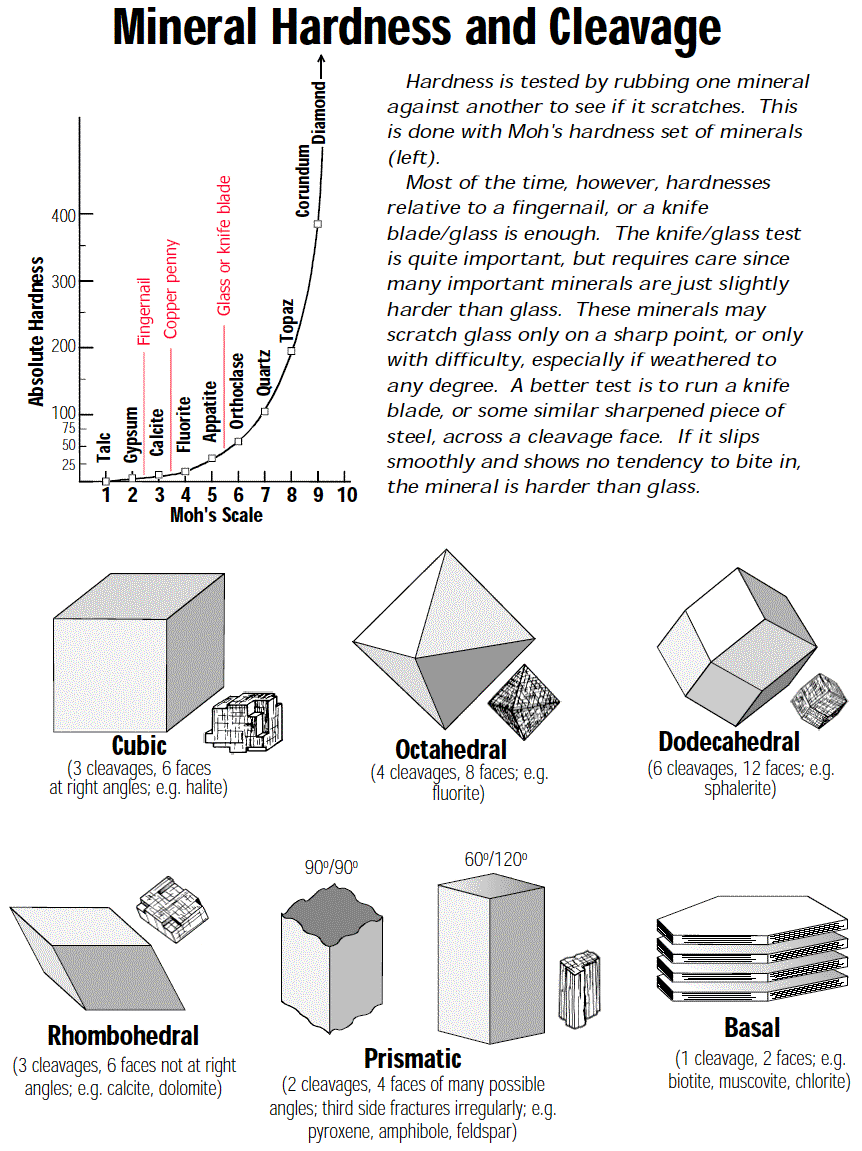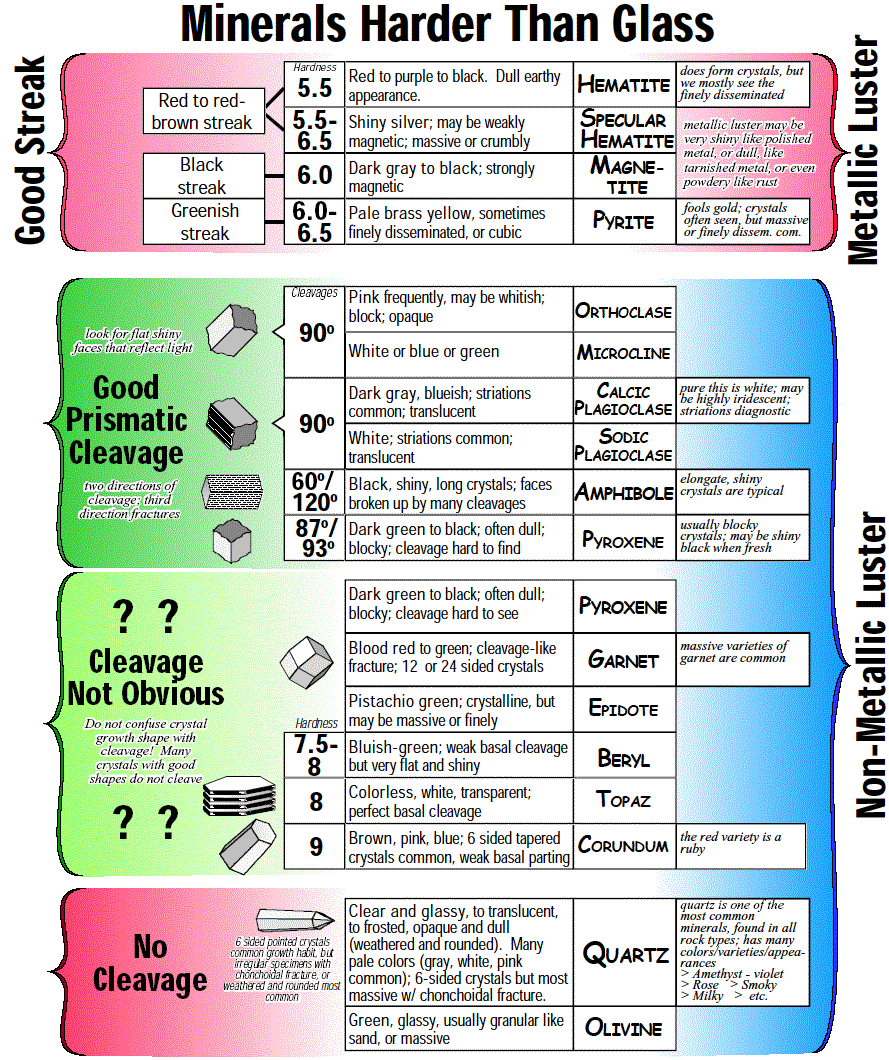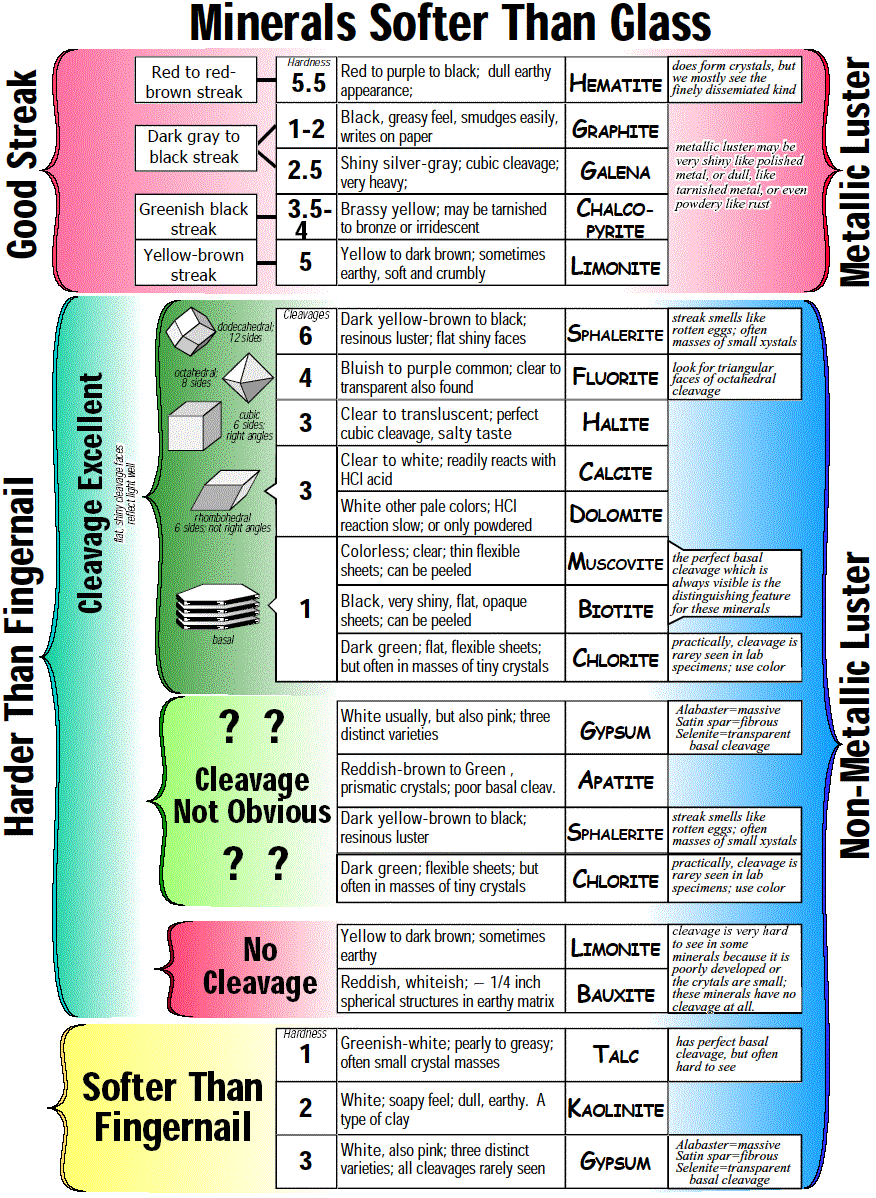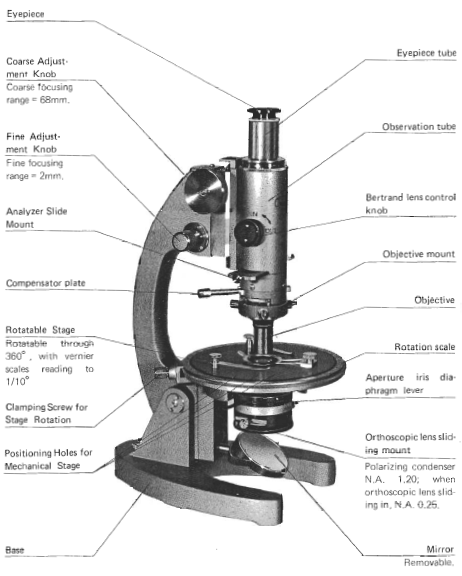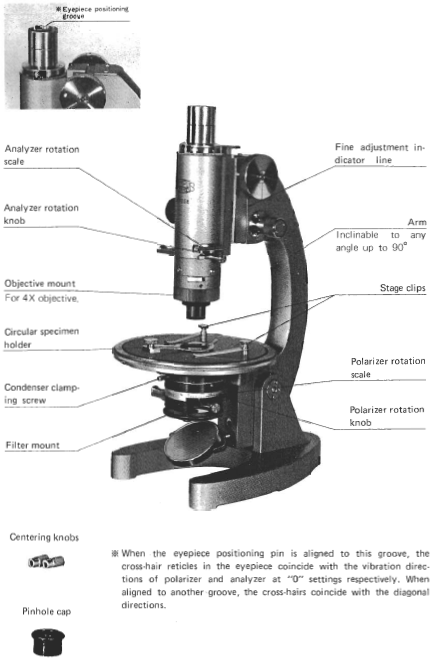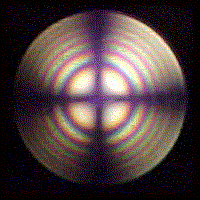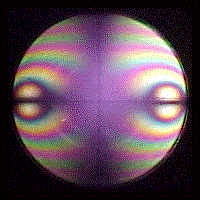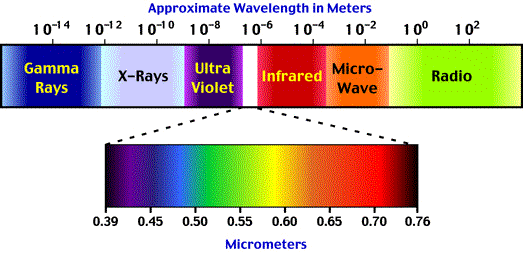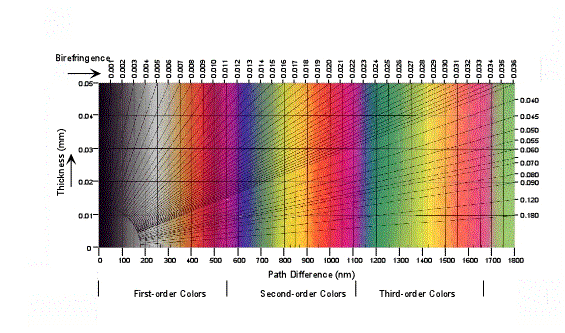|
Quartz |
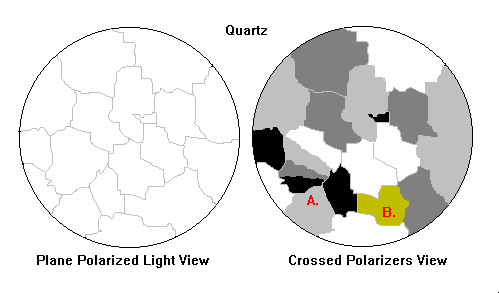 |
Quartz in thin section is generally very clean looking without
many inclusions. It frequently shows undulose extinction (A,
right) or slightly yellowish interference colors (B). |
|
Potassium Feldspar |
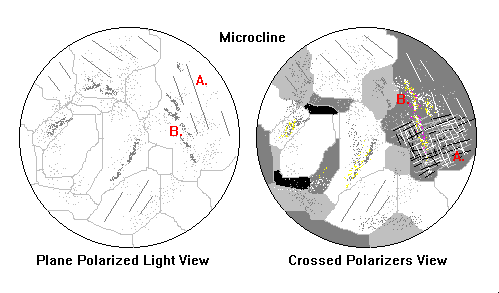 |
Potassium feldspar often shows good cleavage (A, left) and has
a "dusty" appearance from tiny alteration inclusions
(B). If "tartan" twinning is visible (A, right) the
identification is certain. The inclusions often consist of sericite,
or fine-grained muscovite, and show high interference colors
(B) |
|
Plagioclase Feldspar |
 |
Plagioclase feldspars also have good cleavage (A, left) and a
dusty appearance from inclusions. They often show compositional
zoning (A, right), but their most diagnostic feature is prominent
lamellar twinning (B). The inclusions commonly turn out to be
tiny crystals of epidote (C). |
|
〔Steven Dutch氏(Natural
and Applied Sciences, University of Wisconsin-Green Bay)による『296-492 Crustal
Materials Class Notes』の『Rock-Forming
Minerals in Thin Section』の『Quartz
and Its Look-Alikes』から〕
Quartz=石英、Potassium Feldspar=カリ長石、Plagioclase Feldspar=斜長石 |
